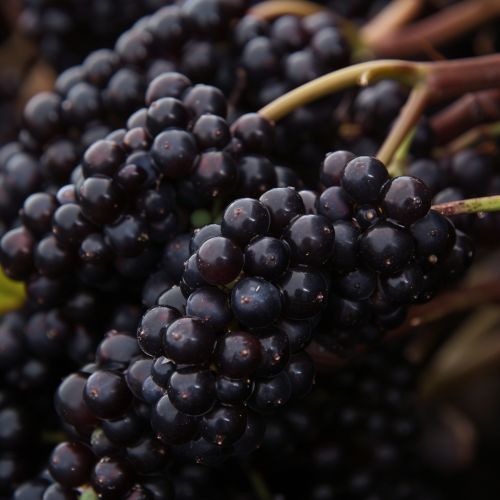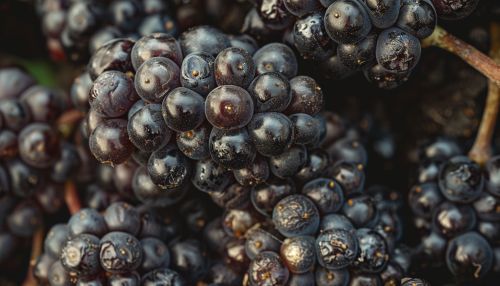Cecotropes: Difference between revisions
No edit summary |
No edit summary |
||
| Line 5: | Line 5: | ||
Cecotropes are produced in the cecum, a part of the animal's digestive tract, through the process of [[Hindgut fermentation|hindgut fermentation]]. The cecum houses a complex community of bacteria, protozoa, and fungi that aid in the breakdown of food particles, particularly fibrous plant material, that the animal's body cannot digest on its own. These microorganisms ferment the undigested food, producing cecotropes as a byproduct. | Cecotropes are produced in the cecum, a part of the animal's digestive tract, through the process of [[Hindgut fermentation|hindgut fermentation]]. The cecum houses a complex community of bacteria, protozoa, and fungi that aid in the breakdown of food particles, particularly fibrous plant material, that the animal's body cannot digest on its own. These microorganisms ferment the undigested food, producing cecotropes as a byproduct. | ||
[[Image:Detail-79145.jpg|thumb|center|A close-up image of cecotropes. They are small, dark, and clustered together, resembling a bunch of grapes.]] | [[Image:Detail-79145.jpg|thumb|center|A close-up image of cecotropes. They are small, dark, and clustered together, resembling a bunch of grapes.|class=only_on_mobile]] | ||
[[Image:Detail-79146.jpg|thumb|center|A close-up image of cecotropes. They are small, dark, and clustered together, resembling a bunch of grapes.|class=only_on_desktop]] | |||
The composition of cecotropes is markedly different from that of regular fecal pellets. They contain a higher proportion of water and are rich in microbial protein, volatile fatty acids, and B vitamins, which are synthesized by the cecal microflora. Cecotropes also contain a significant amount of undigested fiber, which is further broken down during the process of reingestion and digestion. | The composition of cecotropes is markedly different from that of regular fecal pellets. They contain a higher proportion of water and are rich in microbial protein, volatile fatty acids, and B vitamins, which are synthesized by the cecal microflora. Cecotropes also contain a significant amount of undigested fiber, which is further broken down during the process of reingestion and digestion. | ||
Latest revision as of 08:00, 17 May 2024
Introduction
Cecotropes, also known as "night feces" or "soft feces", are a special kind of fecal pellets produced by various species of lagomorphs, including rabbits and hares, and some rodent species. Unlike typical fecal matter, cecotropes are rich in nutrients, particularly proteins and vitamins, and are reingested by the animal in a process known as cecotrophy or coprophagy.
Production and Composition
Cecotropes are produced in the cecum, a part of the animal's digestive tract, through the process of hindgut fermentation. The cecum houses a complex community of bacteria, protozoa, and fungi that aid in the breakdown of food particles, particularly fibrous plant material, that the animal's body cannot digest on its own. These microorganisms ferment the undigested food, producing cecotropes as a byproduct.


The composition of cecotropes is markedly different from that of regular fecal pellets. They contain a higher proportion of water and are rich in microbial protein, volatile fatty acids, and B vitamins, which are synthesized by the cecal microflora. Cecotropes also contain a significant amount of undigested fiber, which is further broken down during the process of reingestion and digestion.
Cecotrophy
Cecotrophy, or the act of reingesting cecotropes, is a crucial part of the animal's nutritional strategy. It allows the animal to extract additional nutrients from its food that would otherwise be lost. This is particularly important for animals with a herbivorous diet, as plant material is often difficult to digest and nutrient-poor.
Cecotrophy typically occurs during periods of rest or sleep, which is why cecotropes are sometimes referred to as "night feces". The animal will bend down and consume the cecotropes directly from the anus, ensuring that they do not come into contact with the ground and become contaminated.
Health Implications
The health of an animal can often be gauged by the appearance and frequency of cecotrope production. Overproduction or underproduction of cecotropes, or changes in their consistency, can be indicative of health issues. For example, an excess of cecotropes can suggest that the animal is being overfed or is not reingesting its cecotropes, while a lack of cecotropes can indicate a problem with the animal's diet or digestive system.
Furthermore, certain diseases can disrupt the normal process of cecotrophy. Gastrointestinal stasis, a common condition in rabbits, can slow down or stop the movement of food through the gut, leading to a buildup of gas and potentially harmful bacteria. This can result in a decrease in cecotrope production and reingestion, leading to malnutrition.
